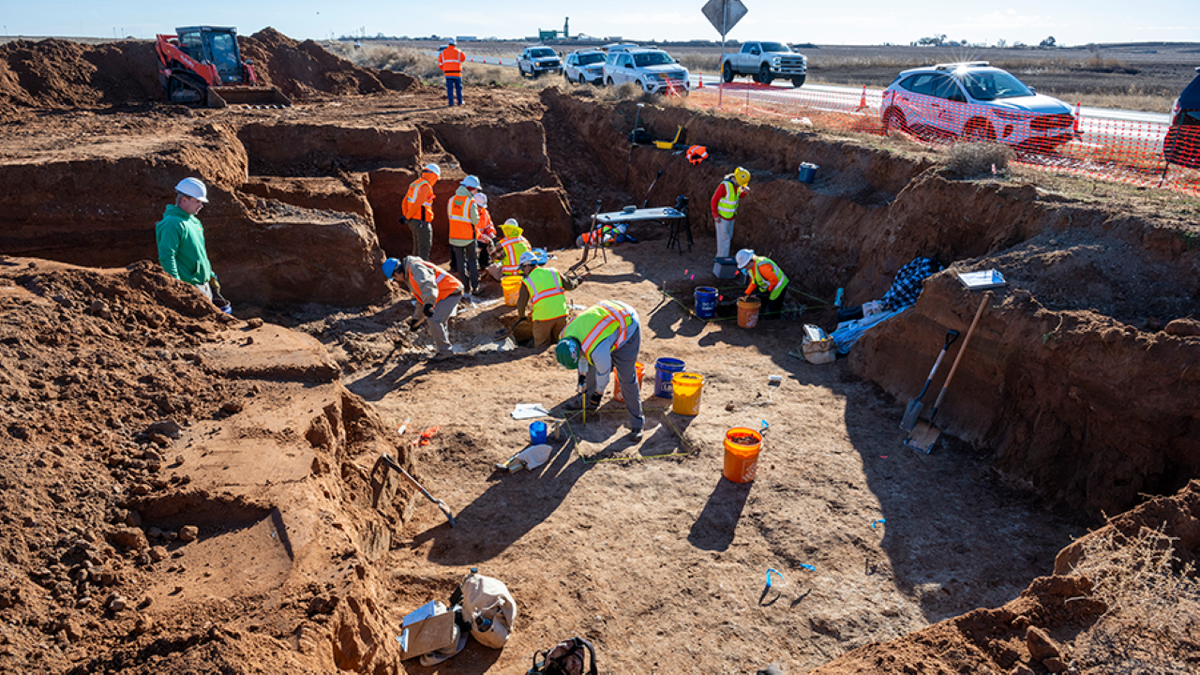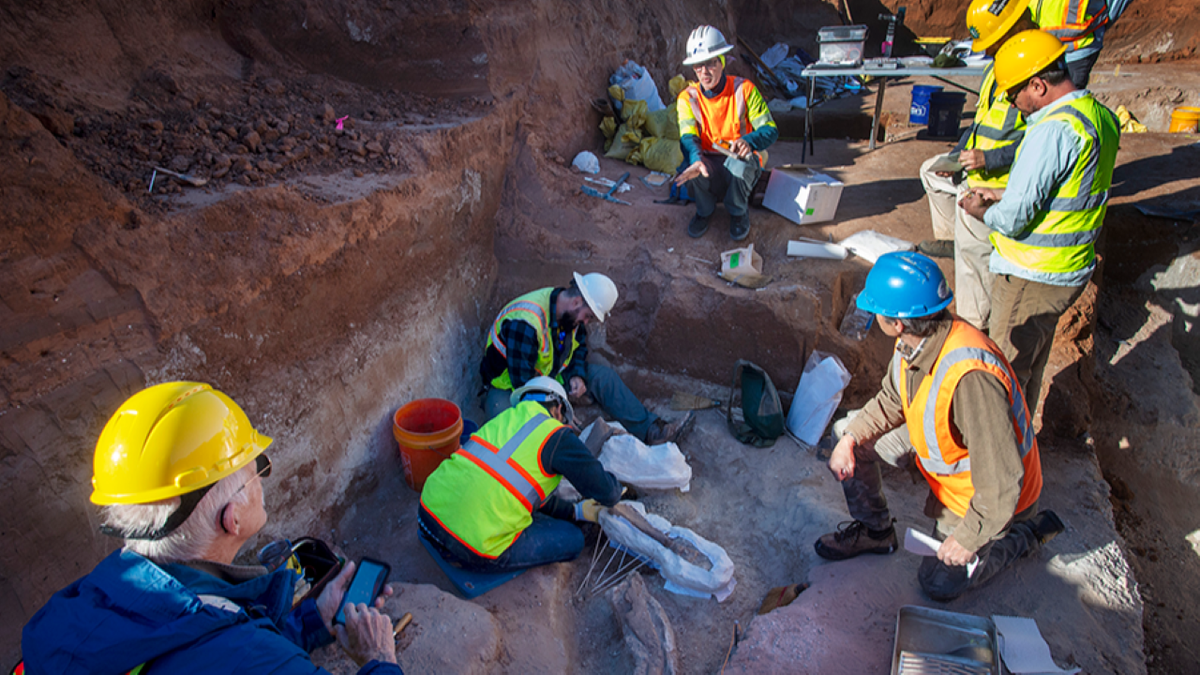In a remarkable discovery during a routine road construction project in Texas, archaeologists unearthed massive prehistoric bones, believed to belong to “colossal creatures.” The find was made during a salvage excavation related to the expansion of Loop 88—a highway project aimed at easing traffic congestion in the region.
While some of the bones are still being examined, paleontologists are not yet certain whether all of them belong to a single giant ground sloth or if the site includes remains of other Ice Age animals such as mammoths or mastodons.
Collaboration for Preservation
The Texas Department of Transportation (TxDOT) is working closely with the Texas Tech Museum to properly identify and preserve the findings. In addition, the agency has launched a full archaeological investigation of the area.
Archaeologists at Work During Salvage Excavations.
Photo: Texas Department of Transportation (TxDOT)
According to TxDOT, “Texas lacks known sites with evidence of human activity dating back to the megafauna period.” As a result, the current phase is considered “preparatory,” focusing on locating potential human-made artifacts such as broken stone tools or spear points.
No Evidence of Human Activity So Far
So far, there’s been no indication of human presence at the site. Even if human artifacts are eventually found, it wouldn’t be unprecedented—TxDOT has encountered such discoveries during other construction projects in the past.
Should evidence of human activity be confirmed, the construction timeline could face delays. Federal law mandates the preservation of historic and prehistoric sites that contain human remains or cultural artifacts.
“The Cradle of Texas”
While the Loop 88 project covers a 12.4-mile stretch currently being transformed into a high-capacity expressway, archaeologists are paying special attention to sites like the Brazos River in Washington County—often dubbed “the cradle of Texas.” There, over 10,000 human artifacts have been found.
In another notable location, Buttermilk Creek, researchers unearthed spear points dating back between 13,500 and 15,500 years, pushing the timeline of early human settlement in the Americas even further back.
A Prehistoric Treasure Trove
The United States is home to many significant archaeological sites, including the Natchez Trace Parkway in Mississippi and Poverty Point in Louisiana—a 3,500-year-old Native American mound complex.
In an interview with Newsweek, a TxDOT spokesperson explained:
“Once unearthed, these prehistoric finds are transferred to the Texas Tech Museum, where the paleontology department handles the identification process. Experts confirm that while the area is rich in megafauna, there’s currently no evidence of human interaction.”
“We Set Out to Build a Road—And Unearthed Giants”
Chris Ringstaff, project planner with TxDOT’s Environmental Affairs Division, shared in a press release:
“During the environmental assessment for Loop 88, we commissioned an archaeological survey. That’s when we discovered bones from massive prehistoric creatures—what we call megafauna. It’s not uncommon in this region.”
“If we do uncover signs of human presence, we’ll alter our construction plans in compliance with both state and federal preservation laws,” he continued. “If the site turns out to predate human activity and lacks artifacts, we’ll recommend halting further studies and proceed with the project as planned.”
Rebekah Dobrasko, director of Cultural Resources at TxDOT, added:
“Excavations like this are just one of the many steps we take before roadwork begins. It’s our responsibility to protect Texas’ historical legacy.”
What’s Next?
TxDOT, in collaboration with Texas Tech University, will continue to examine and attempt to classify the prehistoric remains. Should any evidence of human activity emerge, adjustments will be made to the Loop 88 construction plan in accordance with federal law.
“Our job is to build roads,” said a TxDOT official, “and we ended up bringing giants from the past to lig








